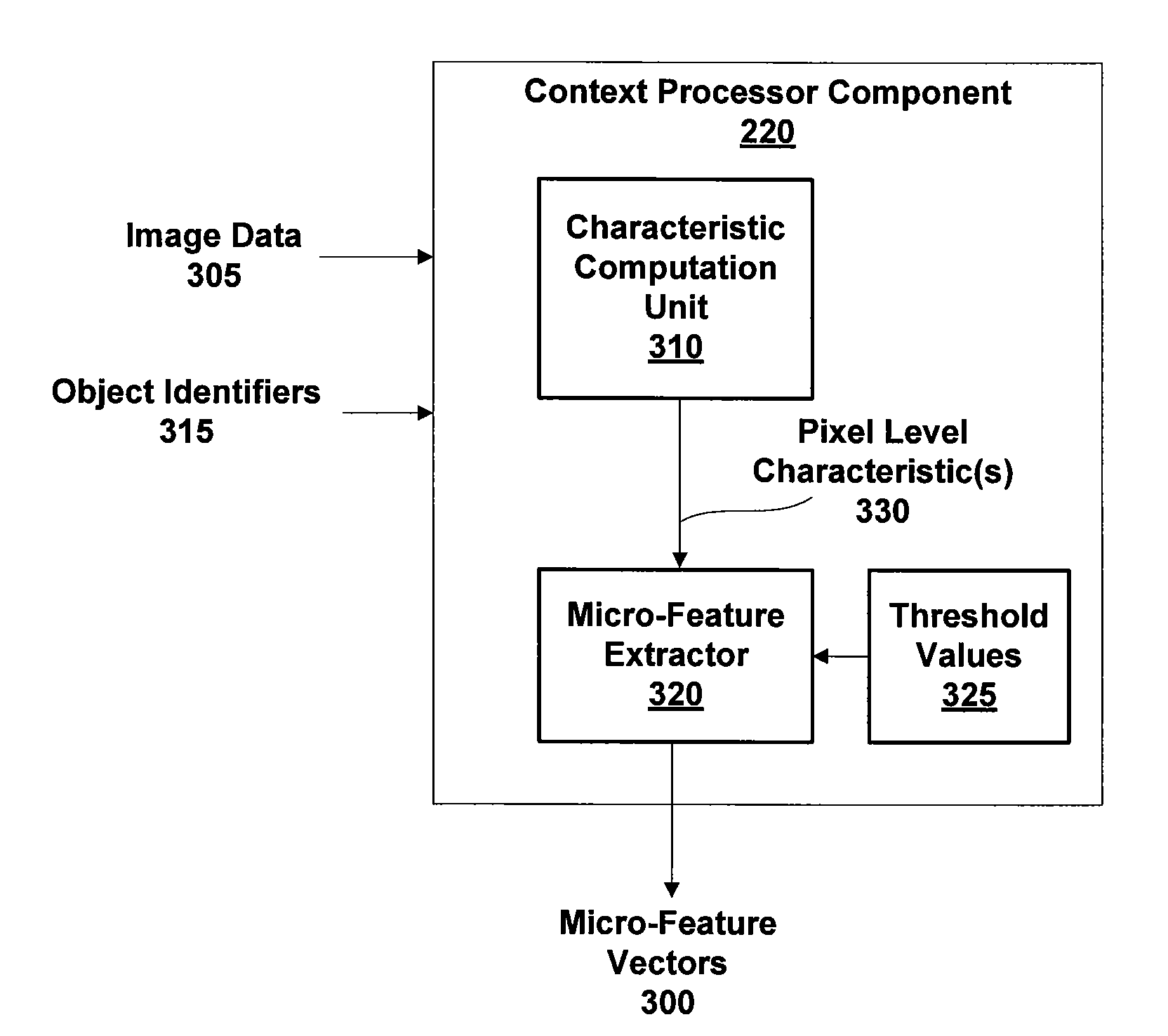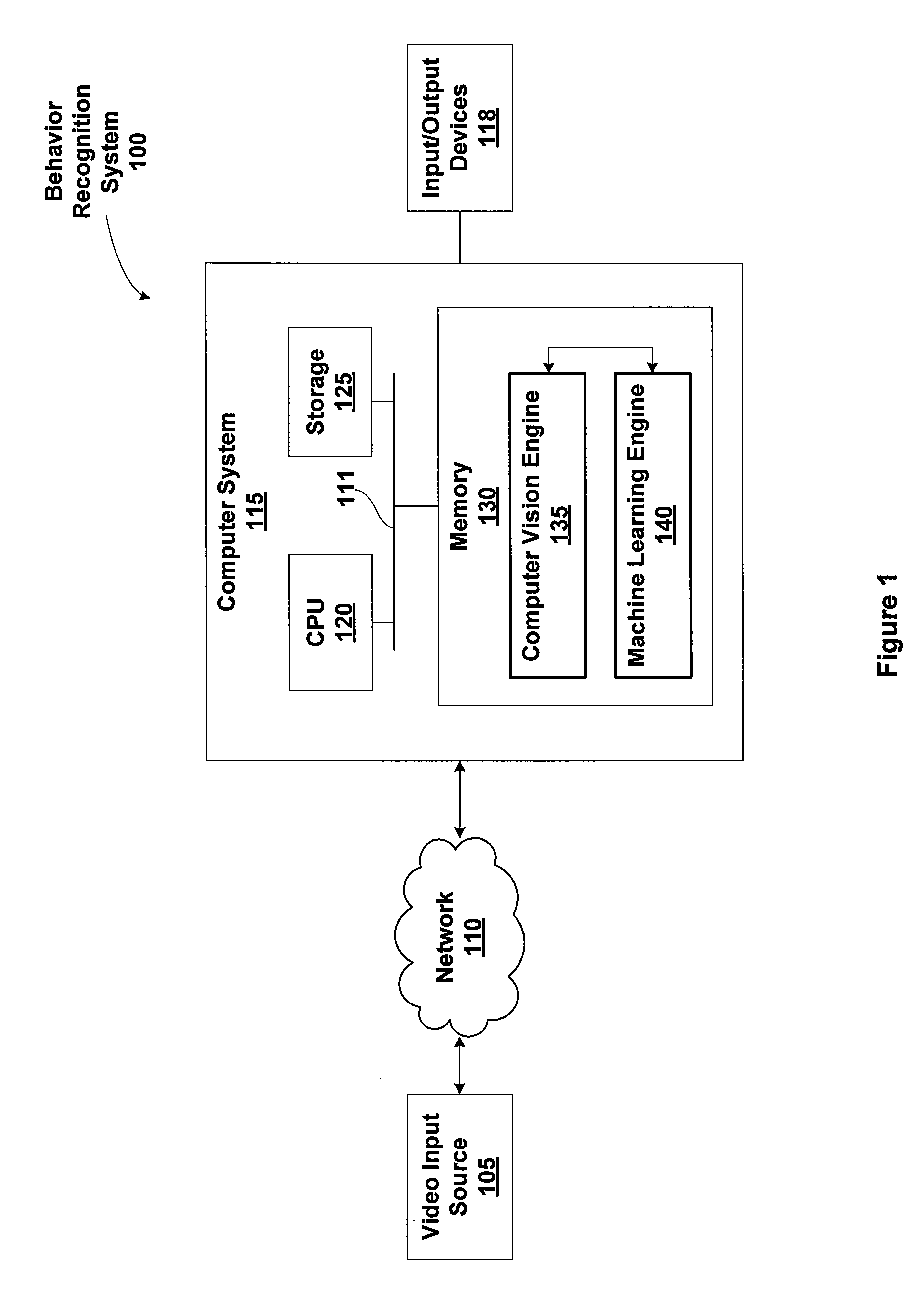Pixel-level based micro-feature extraction
a technology of image data and micro-features, applied in closed circuit television systems, instruments, computing, etc., can solve the problems of surveillance systems with recognition capabilities that are labor intensive and prohibitively expensive to maintain or adapt for different specialized applications, and are often unable to identify objects, events, behaviors, or patterns
- Summary
- Abstract
- Description
- Claims
- Application Information
AI Technical Summary
Problems solved by technology
Method used
Image
Examples
Embodiment Construction
[0034]Embodiments of the invention extract micro-features of one or more images based on pixel-level characteristics. The extraction is unsupervised, i.e., performed independent of any training data that defines particular objects, allowing a behavior-recognition system to forgo a training phase and for object classification to proceed without being constrained by specific object definitions. A micro-feature extractor that does not require training data is adaptive and self-trains while performing the extraction. The extracted micro-features are heuristic features of foreground patches depicting objects and are represented as a micro-feature vector that is input to a micro-classifier which identifies particular object types.
[0035]The micro-feature extractor and micro-classifier may be included within a behavior-recognition system which may be configured to identify, learn, and recognize patterns of behavior by observing and evaluating events depicted by a sequence of video frames. I...
PUM
 Login to View More
Login to View More Abstract
Description
Claims
Application Information
 Login to View More
Login to View More - R&D
- Intellectual Property
- Life Sciences
- Materials
- Tech Scout
- Unparalleled Data Quality
- Higher Quality Content
- 60% Fewer Hallucinations
Browse by: Latest US Patents, China's latest patents, Technical Efficacy Thesaurus, Application Domain, Technology Topic, Popular Technical Reports.
© 2025 PatSnap. All rights reserved.Legal|Privacy policy|Modern Slavery Act Transparency Statement|Sitemap|About US| Contact US: help@patsnap.com



